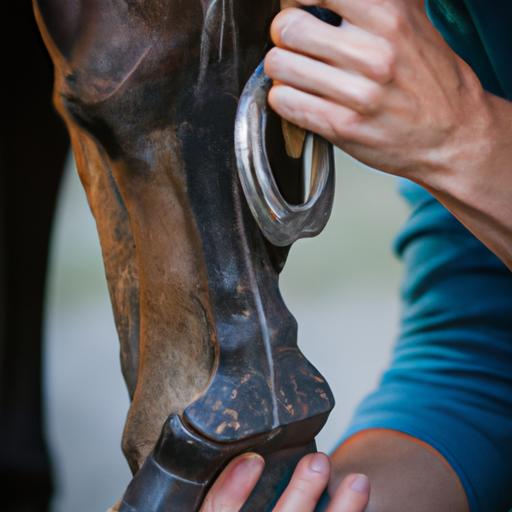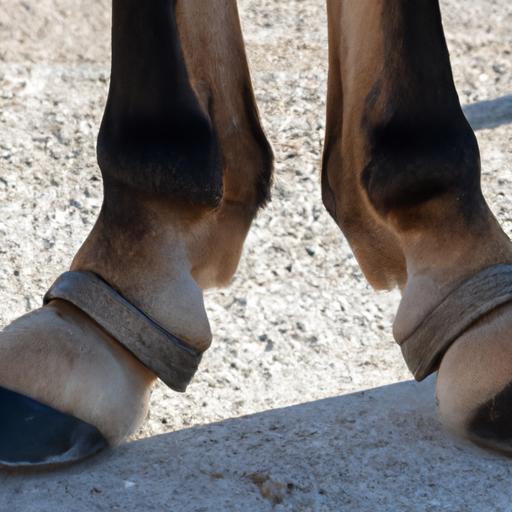Ensure optimal hoof health with fundamental horse hoof care assessment 3. Learn the importance of regular maintenance and preventive measures for your horse’s well-being.
As a horse owner or caretaker, you understand the significance of providing the best care for your equine companion. One crucial aspect that should never be overlooked is the fundamental horse hoof care assessment. This assessment serves as a vital tool to evaluate and maintain the overall health of your horse’s hooves. In this article, I will guide you through the ins and outs of the Fundamental Horse Hoof Care Assessment 3, ensuring that you have the knowledge to keep your horse’s hooves in prime condition.
The term “Fundamental Horse Hoof Care Assessment 3” refers to a comprehensive evaluation process that enables you to assess your horse’s hooves thoroughly. By performing this assessment regularly, you can identify any potential issues or areas that require improvement, ultimately promoting optimal hoof health. Understanding the importance of this assessment sets the foundation for providing the best possible care for your horse.
Now that we have established the significance of the Fundamental Horse Hoof Care Assessment, let’s dive into the step-by-step guide in Section Together, we will explore the intricate anatomy of a horse’s hoof and learn how to conduct a thorough assessment to ensure the well-being of your equine companion. So, are you ready to embark on this journey to master the art of fundamental horse hoof care assessment? Let’s get started!
Understanding Horse Hoof Anatomy

When it comes to caring for your horse’s hooves, it is crucial to have a solid understanding of their anatomy. A horse’s hoof is a complex structure composed of various parts, each playing a vital role in maintaining overall hoof health. Let’s explore these components and their significance in ensuring your equine friend’s well-being.
Overview of the different parts of a horse’s hoof
-
The Hoof Wall: This is the hard outer covering of the hoof, providing protection and support to the inner structures. It is made up of keratin, a tough protein, and acts as a barrier against external elements.
-
The Sole: Located beneath the hoof wall, the sole is a concave surface that provides additional protection to the sensitive inner structures of the hoof. It acts as a shock absorber, dispersing the impact forces while the horse is in motion.
-
The Frog: Found at the back of the hoof, the frog is a triangular-shaped structure that aids in shock absorption and circulation. It also helps with traction, providing grip on different terrains.
-
The Bars: These are extensions of the hoof wall that run parallel to the frog, forming a supportive structure. They help to distribute the weight evenly across the hoof and provide stability.
Importance of maintaining hoof health for overall equine well-being
Maintaining proper hoof health is vital for the overall well-being of your horse. Healthy hooves enable your horse to move comfortably, preventing lameness and other related issues. Neglecting hoof care can lead to various problems like cracks, infections, and imbalances, which can significantly impact your horse’s quality of life.
Regular assessment and care of your horse’s hooves are essential for early detection of any issues. By identifying and addressing problems promptly, you can prevent them from escalating into more severe conditions. Additionally, proper hoof care promotes blood circulation, which enhances the health of the entire horse.
Now that we have a solid understanding of horse hoof anatomy and the importance of maintaining hoof health, let’s move on to Section III, where we will delve into the step-by-step guide for conducting the Fundamental Horse Hoof Care Assessment 3.
Step-by-Step Guide to Fundamental Horse Hoof Care Assessment 3
Understanding the Assessment Process and Its Significance
Before we delve into the nitty-gritty of the Fundamental Horse Hoof Care Assessment 3, let’s take a moment to understand why this process is so crucial. Conducting regular assessments allows you to monitor the health and condition of your horse’s hooves, identifying any potential issues before they escalate into more significant problems. By being proactive in hoof care, you can prevent discomfort, lameness, and other complications that may arise from neglected hoof health.
Detailed Instructions for a Thorough Assessment
Now that we recognize the importance of the assessment, let’s walk through the step-by-step process to conduct a comprehensive Fundamental Horse Hoof Care Assessment 3:
A. Cleaning and Preparing the Hoof for Assessment
Start by ensuring that the hoof is free from dirt, debris, and any foreign objects. Gently clean the hoof using a hoof pick, removing any mud or stones lodged in the crevices. This step allows for a clear view of the hoof’s condition.
B. Evaluating the Hoof’s Overall Condition
Take a moment to examine the hoof’s general appearance. Look for any signs of inflammation, swelling, or discharge, as these may be indicative of underlying issues. Assess the color and texture of the hoof, noting any abnormalities or changes.
C. Checking for Any Signs of Damage or Abnormalities
Carefully inspect the hoof for any cracks, splits, or chips. These can weaken the hoof structure and lead to further complications if left unaddressed. Additionally, keep an eye out for any signs of thrush, a bacterial infection that commonly affects the frog area of the hoof.
D. Assessing Hoof Growth and Balance
Evaluate the hoof’s growth patterns and ensure that it is well-balanced. Uneven growth or imbalances can cause discomfort and affect your horse’s gait. Measure the hoof’s angle and check for any discrepancies that may require corrective trimming or shoeing.
E. Identifying Potential Issues or Areas for Improvement
During the assessment, be vigilant in identifying any potential areas that require improvement. This could include areas of excessive wear, inadequate sole thickness, or imbalances in the hoof wall. By recognizing these issues early on, you can take appropriate measures to address them and maintain optimal hoof health.
Now that we have mastered the step-by-step process of Fundamental Horse Hoof Care Assessment 3, let’s move on to Section Here, we will explore common hoof problems and their corresponding solutions, providing you with the knowledge to effectively address any issues that may arise.
Common Hoof Problems and Solutions
During the Fundamental Horse Hoof Care Assessment 3, it is not uncommon to come across various hoof issues that may require attention. Identifying these problems early on is crucial for maintaining your horse’s overall hoof health. Let’s delve into some common hoof problems that may be identified during the assessment and explore the causes and recommended solutions for each.
A. Cracked or Split Hooves
Cracked or split hooves can result from a variety of factors, such as dryness, excessive moisture, or improper trimming. These issues can be painful and lead to further complications if left untreated. To address cracked or split hooves, it is essential to maintain proper moisture balance. Regularly moisturizing the hooves with specialized hoof conditioners and avoiding prolonged exposure to wet or muddy conditions can help prevent and heal cracks. Additionally, working closely with a professional farrier to ensure proper trimming techniques will help promote healthy hoof growth and minimize the risk of cracking.
B. Thrush or Other Infections
Thrush is a common bacterial infection that affects the frog area of the hoof. It thrives in moist and dirty environments, causing an unpleasant odor and black, necrotic tissue. To combat thrush and other hoof infections, practicing good hygiene is key. Regularly cleaning the hooves and keeping the living area clean and dry can help prevent the development of infections. Additionally, applying a suitable thrush treatment recommended by your veterinarian or farrier can effectively address the issue. Remember, early intervention is crucial to prevent the infection from spreading and causing further damage.
C. Laminitis or Founder
Laminitis, also known as founder, is a severe and often painful condition that affects the laminae within the hoof. It can be caused by various factors, including diet, obesity, or systemic illnesses. Promptly addressing laminitis is crucial to prevent irreversible damage to the hooves. Consulting with a veterinarian or equine specialist is essential to develop a comprehensive treatment plan tailored to your horse’s specific needs. Treatment may involve dietary adjustments, pain management, and therapeutic shoeing to alleviate pressure on the hooves and promote healing.
D. Hoof Imbalances or Abnormalities
Hoof imbalances or abnormalities can arise from a variety of factors, such as improper trimming, conformation issues, or uneven wear. These imbalances can lead to discomfort, lameness, and other complications. Working closely with a skilled farrier or equine podiatrist is crucial to address these issues. They can assess the hoof’s balance, address any conformational challenges, and provide corrective trimming or shoeing techniques to restore proper hoof alignment. Regular monitoring and maintenance are key to preventing imbalances from worsening and ensuring your horse’s comfort and soundness.
By understanding these common hoof problems and their respective solutions, you are better equipped to address any issues that may arise during the Fundamental Horse Hoof Care Assessment 3. Remember, prompt intervention, regular hoof maintenance, and professional guidance are essential for maintaining optimal hoof health. In the next section, we will explore how to maintain and prevent these common hoof problems, ensuring your horse’s hooves remain in top shape.
Conclusion
In conclusion, the Fundamental Horse Hoof Care Assessment 3 is an essential practice that should not be overlooked when it comes to maintaining the overall health and well-being of your horse. By understanding the importance of this assessment and following the step-by-step guide, you can ensure optimal hoof health for your equine companion.
Throughout this article, we have explored the significance of regular hoof care and maintenance. By adhering to preventive measures, such as regular trimming and farrier visits, providing a suitable living environment, ensuring proper nutrition and supplementation, and promoting regular exercise and movement, you can significantly reduce the risk of common hoof problems.
Remember, the well-being of your horse starts from the ground up, and their hooves play a crucial role in their overall health and performance. By implementing the Fundamental Horse Hoof Care Assessment 3 as a regular practice, you are taking proactive steps to prevent potential issues, identify areas for improvement, and provide the best care for your equine companion.
At Horsemasterypro.com, we prioritize the health and happiness of horses. We encourage you to incorporate the knowledge and techniques shared in this article into your horse care routine. By doing so, you are not only ensuring the longevity and soundness of your horse’s hooves, but also fostering a stronger bond and partnership with your equine friend.
So, let’s embark on this journey together to master the art of fundamental horse hoof care assessment and give our horses the care they deserve. Remember, healthy hooves lead to happy horses!
Bolded: Horsemasterypro.com


